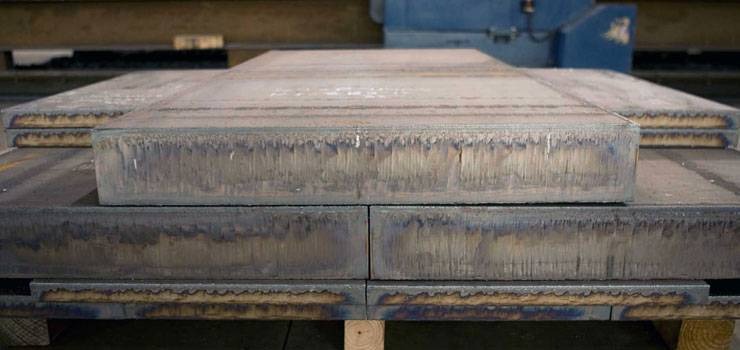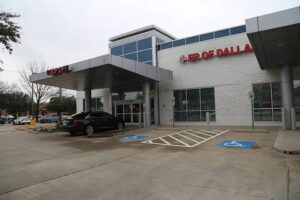
Wear plates are essential components used extensively in industries that require protection of surfaces against wear, abrasion, and impact. Over decades, their role in enhancing equipment durability and reducing maintenance costs has become indispensable. In this ultimate guide, we will explore everything you need to know about wear plates—from their types and applications to the myriad benefits they offer.
What is a Wear Plate?
A Wear Plates is a specially designed metal sheet or plate that is engineered to withstand severe abrasion, erosion, and impact. These plates are typically installed on machinery, equipment, or structural surfaces that face constant wear and tear, thereby extending their lifespan. Made from materials like hardened steel or composite metals, wear plates act as protective barriers against mechanical damage.Why Are Wear Plates Important?
Industries such as mining, construction, agriculture, and manufacturing often face heavy material handling and harsh operating environments. Surfaces exposed to friction, heavy loads, or impact can deteriorate rapidly. Installing wear plates:- Prevents premature equipment failure.
- Reduces downtime and maintenance costs.
- Increases operational efficiency.
- Enhances worker safety by minimizing equipment breakdowns.
Types of Wear Plates
There is a wide variety of wear plates available, each designed to suit specific industrial needs and conditions. Understanding their types helps in selecting the right wear plate for your application.1. Manganese Steel Wear Plates
Known for exceptional toughness and high impact resistance, manganese steel plates harden during use, making them ideal for heavy impact environments like rock crushers or mining equipment.2. AR (Abrasion Resistant) Steel Plates
AR plates are high-carbon steel plates specially treated to resist wear and abrasion. They provide excellent durability for applications involving sliding or abrasive materials, such as chutes and hoppers.3. Ceramic Wear Plates
Ceramic wear plates combine the hardness of ceramic materials with metal backing. They offer superior resistance to abrasion and high temperatures, commonly used in cement plants and power generation.4. Composite Wear Plates
These plates combine different materials, such as rubber and metal, to provide resistance against both abrasion and impact. Used in environments where flexibility and toughness are required.5. Hardfaced Wear Plates
Created by welding hard materials onto a base plate, these wear plates can be customized to specific wear conditions, offering extended service life in severe abrasion environments.Table: Overview of Common Wear Plate Types
| Wear Plate Type | Material Composition | Key Features | Typical Applications |
|---|---|---|---|
| Manganese Steel | High manganese steel | Work hardening, impact resistance | Mining, rock crushers |
| AR Steel | High carbon steel | Abrasion resistance, toughness | Chutes, hoppers, conveyors |
| Ceramic Wear Plates | Ceramic + metal backing | High abrasion & heat resistance | Cement plants, power plants |
| Composite Wear Plates | Rubber + metal or polymers | Flexibility, abrasion & impact resistance | Agriculture, material handling |
| Hardfaced Plates | Base steel + hard welding | Customized hardness & durability | Heavy equipment, steel mills |
How Do Wear Plates Work?
The core principle of wear plates is to absorb or resist the damage that would otherwise affect the underlying base material or equipment. They take the brunt of friction, impact, or abrasive forces.- Impact resistance: Plates like manganese steel absorb shocks by deforming slightly and then hardening.
- Abrasion resistance: Plates such as AR steel have a hard surface that resists surface wear caused by particles sliding across.
- Heat resistance: Ceramic wear plates withstand high temperatures without losing structural integrity.
Key Applications of Wear Plates
Wear plates find their utility across many sectors due to their protective properties.Mining Industry
In mining, equipment like excavators, crushers, and conveyors experience extreme abrasion and impact. Wear plates protect these machines, especially in the digging teeth, dump truck beds, and crusher liners, thereby enhancing productivity.Construction Industry
Heavy construction machinery such as bulldozers, loaders, and earth movers face constant wear. Installing wear plates on bucket edges and undercarriages reduces repair frequency and improves machine lifespan.Agriculture
Agricultural equipment like plows, seeders, and harvesters benefit from wear plates to protect against soil abrasion and stone impact, reducing operational downtime.Manufacturing and Processing Plants
Wear plates are used in chutes, hoppers, mixers, and conveyor belts to protect against abrasion and corrosion caused by processed materials.Power Generation
In power plants, particularly coal and biomass plants, wear plates protect boiler tubes and chutes from abrasive coal dust and slag, helping to maintain efficient operations.Benefits of Using Wear Plates
Using wear plates offers a wide array of benefits that justify their importance in industrial settings:1. Extended Equipment Life
Wear plates act as sacrificial layers, protecting critical machine parts from wear and tear, significantly extending their service life.2. Cost Efficiency
By preventing damage, they reduce the frequency and cost of repairs or replacements, leading to substantial savings in maintenance.3. Improved Safety
Minimizing equipment failure reduces workplace accidents, ensuring a safer environment for operators.4. Enhanced Operational Efficiency
Machines operate longer without interruption, boosting overall productivity.5. Customization
Wear plates can be customized in thickness, material, and hardness based on application-specific requirements, ensuring optimal protection.How to Choose the Right Wear Plate?
Selecting the appropriate wear plate depends on several factors:- Type of wear: Is it abrasive, impact, corrosive, or a combination?
- Operating environment: Temperature, moisture, and chemical exposure.
- Mechanical stresses: Load, pressure, and frequency of impact.
- Cost considerations: Initial price versus lifecycle cost.
- Installation requirements: Size, shape, and attachment methods.


